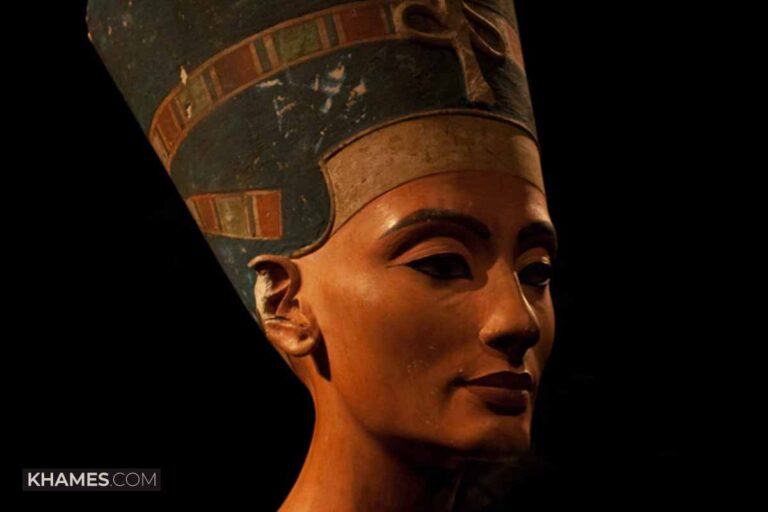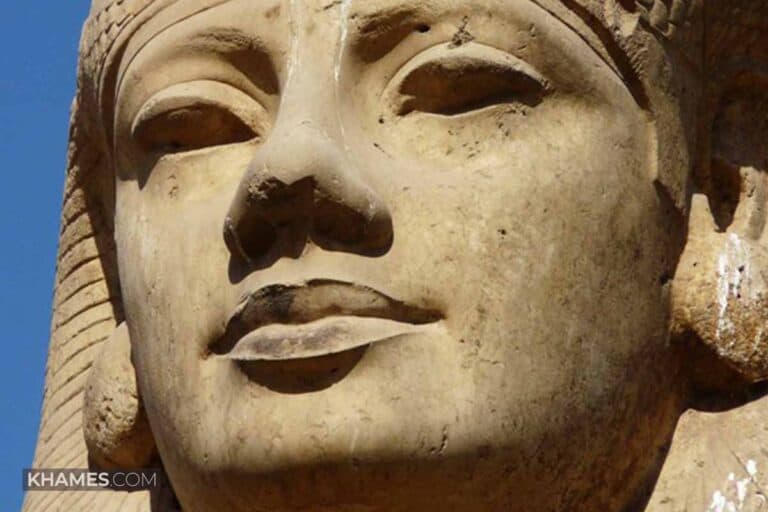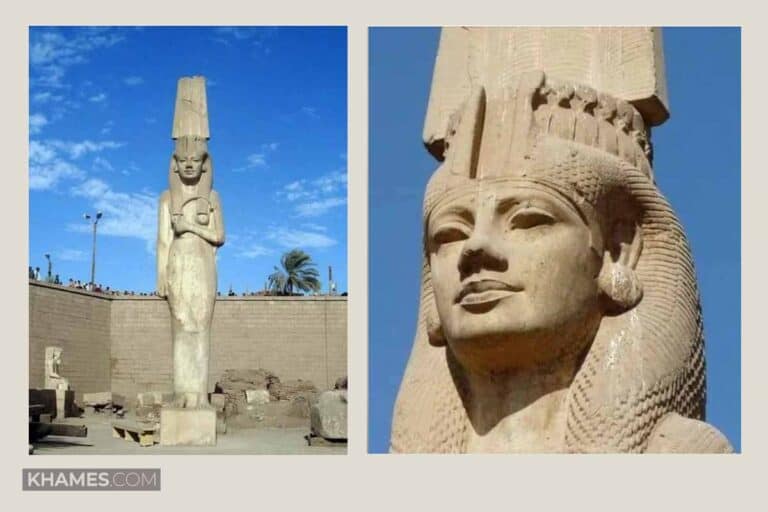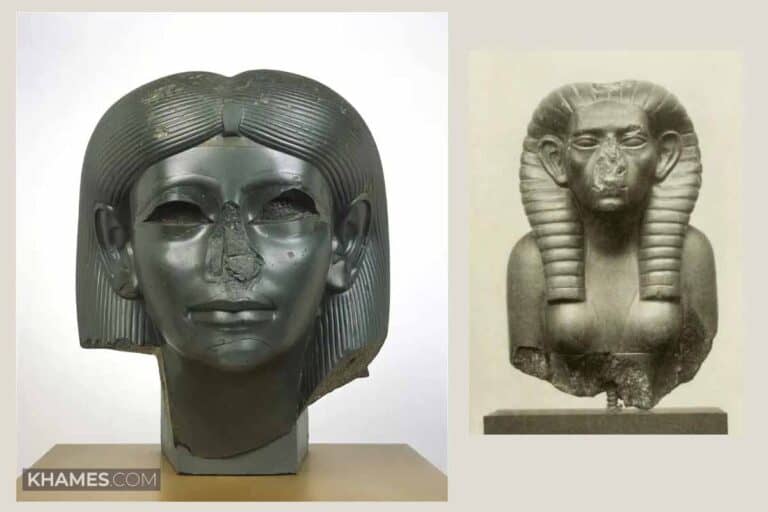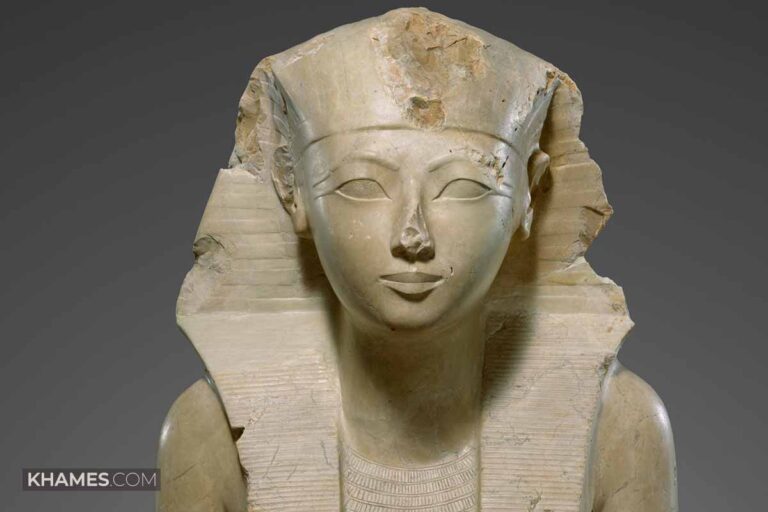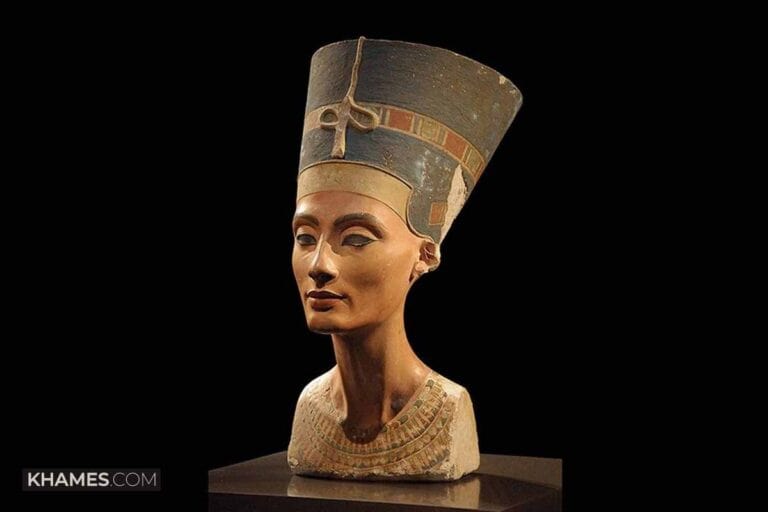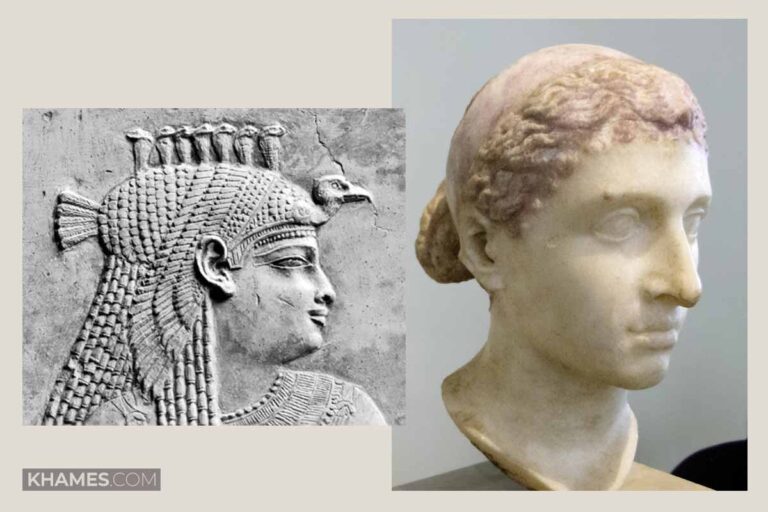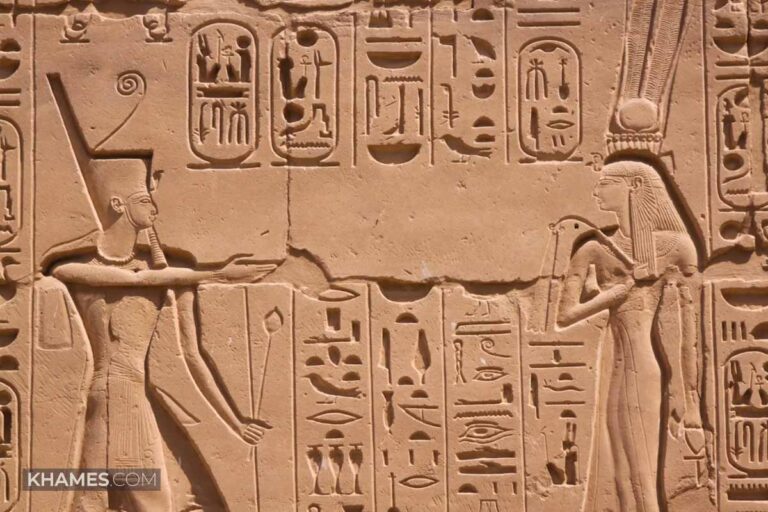As we delve into the depths of history, it is impossible to ignore the significant role played by ancient Egyptian queens. These ancient queens broke barriers and defied norms to leave a lasting impact on Egypt’s history that transcends their time.
Through their diplomatic prowess and visionary leadership, these Egyptian queens leaved behind enduring legacies in art, architecture, and religious practices.
Join us on a journey through history as we shine a light on the lives and legacies of these ten formidable women who played pivotal roles in shaping one of civilization’s most enigmatic empires.
Egyptian Queen Merneith (2920 BCE)
Additionally, recent archaeological discoveries have shed new light on Queen Merneith’s possible military prowess. Artifacts recovered from her tomb include weapons and evidence of military campaigns, challenging the notion that ancient Egyptian queens were merely consorts or figureheads.
These findings suggest that Queen Merneith may have played a significant role in matters of warfare and defense—an aspect of her reign that has been largely overlooked until now.
Additionally, recent archaeological discoveries have shed new light on Queen Merneith’s possible military prowess. Artifacts recovered from her tomb include weapons and evidence of military campaigns, challenging the notion that ancient Egyptian queens were merely consorts or figureheads.
These findings suggest that Queen Merneith may have played a significant role in matters of warfare and defense—an aspect of her reign that has been largely overlooked until now.
Queen Sobekneferu (1806-1802 BCE)
Queen Sobekneferu, often described as the first confirmed female pharaoh of ancient Egypt, rose to power during a time of dynastic transition. Her reign is shrouded in mystery and intrigue, with many historians considering her a figure who defied traditional gender roles in ancient Egyptian society.
Sobekneferu’s short-lived rule may have signaled a pivotal moment in the history of women’s empowerment within the Egyptian monarchy.
During her reign, Queen Sobekneferu actively promoted royal ideology and supported religious cults dedicated to deities associated with kingship. Despite ruling for just a few years, she left an indelible mark on Egypt’s history as a woman who dared to ascend to the highest position of authority in a male-dominated society.
Sobekneferu’s legacy challenges conventional notions of female leadership in ancient civilizations and serves as an inspiration for modern discussions on gender equality and women’s rights.
Leveraging her royal status and asserting her influence through religious ceremonies and public displays of power, Queen Sobekneferu navigated the intricate politics of Pharaonic rule with poise and determination.
Her story continues to captivate scholars and enthusiasts alike as they unravel the complexities of female leadership in one of history’s most enduring civilizations.
Queen Hatshepsut (1479-1458 BCE)
Queen Hatshepsut, often overlooked in ancient Egyptian history, was a remarkable and powerful ruler who defied traditional gender roles. She claimed the title of pharaoh and ruled as a king, boldly asserting her authority in a male-dominated society.
Her reign was marked by unprecedented prosperity, economic growth, and monumental building projects, including the iconic mortuary temple at Deir el-Bahari. Instead of being overshadowed by her male successors, Hatshepsut’s legacy continues to inspire scholars and historians to reexamine women’s roles in ancient Egypt.
Furthermore, Queen Hatshepsut’s influence extended beyond domestic affairs as she maintained advantageous diplomatic relations with foreign powers such as Punt. She established trade routes that enriched Egypt’s economy and expanded its cultural horizons.
Moreover, her reign saw advancements in art, architecture, and religious practices that significantly shaped the legacy of ancient Egypt. Despite attempts to erase her from historical records after her death, modern discoveries have illuminated the extraordinary achievements of this groundbreaking queen.
Egyptian Queen Nefertiti (1370 – 1330 BCE)
Queen Nefertiti, often referred to as the beautiful one has come, remains an enigmatic figure in ancient Egyptian history. Known for her stunning bust and elegant depictions in art, she was a woman of immense influence during her time.
Beyond her renowned beauty, Nefertiti held significant political power as the Great Royal Wife of Pharaoh Akhenaten. She is believed to have played a pivotal role in the religious revolution that transformed ancient Egypt’s worship from multiple gods to the monotheistic cult of Aten, challenging traditional beliefs and leaving an indelible mark on Egyptian society.
Nefertiti’s reign was characterized by an unprecedented level of gender equality and agency. She was depicted alongside her husband engaging in official activities—an uncommon sight in ancient Egypt.
Moreover, recent archaeological discoveries suggest that she may have ruled independently after Akhenaten’s death, signifying a period where women held substantial political authority in a male-dominated society.
Queen Nefertiti’s legacy is not just about her beauty or royal status; it reflects a revolutionary era where women could shape the course of history and redefine societal norms.
Queen Cleopatra (69 – 30 BCE)
Queen Cleopatra, the last pharaoh of Egypt, is often depicted as a seductive temptress who used her beauty to charm and manipulate powerful men.
However, recent historical research has revealed her as a highly intelligent and resourceful leader who navigated the complex political landscape of ancient Egypt with remarkable skill.
Cleopatra was fluent in several languages, including Greek and Egyptian, and she used her linguistic abilities to communicate directly with her subjects and cultivate strong diplomatic relationships.
One of Queen Cleopatra’s most significant achievements was her alliance with the Roman general Julius Caesar. Their partnership not only secured her hold on the throne but also allowed her to expand Egypt’s influence in the Mediterranean world.
Additionally, she played a crucial role in shaping the cultural landscape of Egypt, embracing local traditions while also promoting Hellenistic culture throughout her kingdom.
Despite facing numerous challenges during her reign, Queen Cleopatra’s legacy endures as a symbol of female empowerment and strategic leadership in a male-dominated ancient world.
Conclusion: Ancient Egyptian Queens
In conclusion, the stories of these powerful ancient Egyptian queens offer a fascinating insight into the often overlooked contributions of women in history.
From Nefertiti’s cultural influence to Cleopatra’s political prowess, these queens defied gender norms and left an indelible mark on their society. By exploring their legacies, we can gain a richer understanding of the complex dynamics of power, gender, and leadership in ancient Egypt.
It is imperative that we continue to uncover and amplify the untold stories of these remarkable women, ensuring that their enduring legacy is recognized and celebrated for generations to come. Their tales serve as a reminder of the enduring strength and influence of female leaders throughout history.

